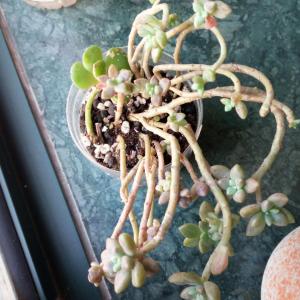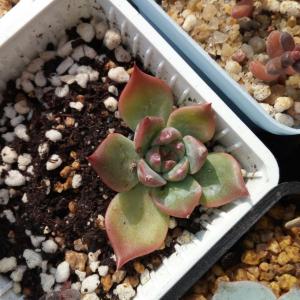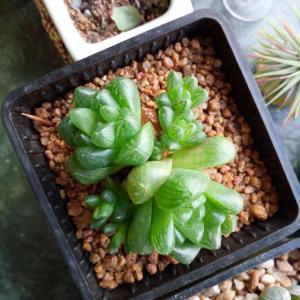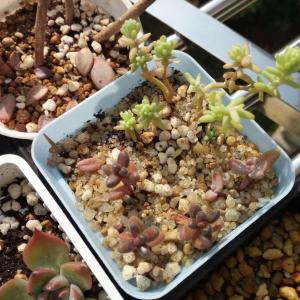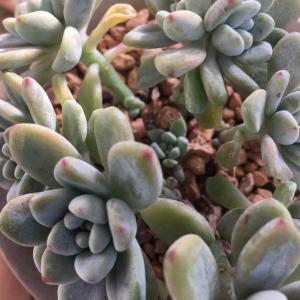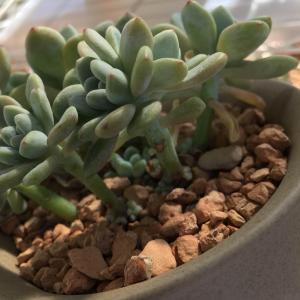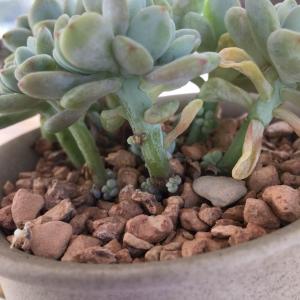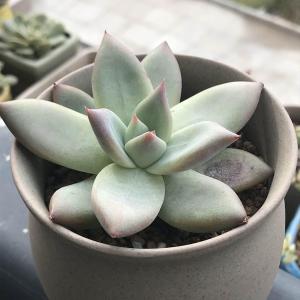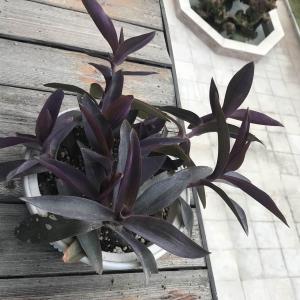文章
Miss Chen
2017年11月10日

Adventurous Arizona gardeners don't let the state's challenging conditions keep plump, juicy strawberries (Fragaria spp.), hardy from U.S. Department of Agriculture plant hardiness zones 3 through 10, from their planting lists. The diverse climate and soils simply mean that strawberries need some extra TLC. Growing zones in the state stretch from USDA zones 4b through 10, with average winter lows ranging from minus 25 degrees Fahrenheit to 40 F. Whatever your region, proper planting gets Arizona strawberries started right.

Site Selection
Even in Arizona's low desert, unexpected frosts can damage tender strawberry blossoms and steal spring crops. The earliest flowers produce the largest berries, so protection is important.
Plant strawberries on elevated slopes, where cold air drains away and lessens chances of frost damage. Cooler, north-facing slopes generally prompt later blooms, which gives an added buffer against bloom loss.
Strawberries fruit best in full sun locations, but low-desert berries need protection from intense sun. Locations near homes provide frost protection, but avoid west-facing walls that reflect Arizona heat.
Soil Adjustments
Strawberries prefer well-drained, low-saline, organic soil with neutral to slightly acidic pH near 6.5. Most Arizona soils are alkaline and saline, with little organic matter. Without adjustments, strawberries suffer nutrient deficiencies.

Test your soil, and follow test recommendations explicitly. Most Arizona gardens need pH lowered for strawberries, but some have acidic soil. Because Arizona soils contain calcium carbonate, common pH-lowering products, including sulfur, don't often work. Using the wrong amendments or the wrong amounts can leave soil toxic. Don't guess; test.
Layer 2 to 3 inches of organic compost over the planting bed, along with 1 pound of 12-24-12 fertilizer per 100 square feet. Wear protective clothing, including gloves and goggles, and mix the layers in 8 inches deep. Avoid manure-base compost, which may add salts.
Planting Time
Plant Arizona strawberries in late winter or spring, after the last average frost date for your region passes. In Arizona's low desert, this happens in February. Mountain regions wait until June.
Trim roots to about 6-inch lengths, and keep them moist at all times. Use sharp garden scissors or pruners, and sterilize the blades with household disinfectant before and after you trim.
Planting depth is critical. Bury roots, but keep the plant's crown exposed at the soil's surface. Planted too low, strawberries rot. Planted too high, crowns dry out. Space strawberry plants at 12- to 18-inch intervals, and water them thoroughly.
Initial Care
Remove all flowers the first season, so strawberries focus on roots, not fruits. When new growth begins, broadcast 1/2 pound of 21-0-0 ammonium sulfate per 100 square feet. Wear protective clothing, and scratch the fertilizer in lightly; leave roots undisturbed. Water thoroughly, washing any fertilizer from leaves.
Drip irrigation suits Arizona strawberries. Overhead watering promotes disease, fuels weed growth and wastes water to evaporation. A layer of organic mulch, such as pine needles or straw, helps retain soil moisture, inhibit weeds and keep soil cool.
Strawberry roots generally stay in the soil's top 6 inches. The shallow roots need consistent moisture of at least 1 inch per week. Water every three to five days, with up to 2 inches of weekly water during hot weather.
Berry Selection
With Arizona's diversity, match berry types to elevation. Strawberries fall in three main groups: June-bearing, everbearing and day-neutral.
Runner-producing June-bearing strawberries flower and fruit early. If frost nips them, your crop is lost. They suit lower, warmer elevations with few late frosts. Cold-hardy, Minnesota-developed "Mesabi" June-bearing strawberry (Fragaria x ananassa "Mesabi," USDA zones 3 through 8) does well in high-pH Southwest soil.
Multicrowned everbearing strawberries have few runners, but produce smaller crops in spring and fall. Autumn harvest still follows if spring frost hits, but everbearers struggle in low-desert heat. Higher, cooler elevations suit them best, but offer shorter growing seasons. Vigorous "Ogalla" everbearing strawberry (Fragaria x ananassa "Ogallala," USDA zones 3 through 9) withstands arid conditions well.
Day-neutral strawberries flower and fruit all growing season, with fewer runners and smaller berries. Their flowers fail once temperatures go above 70 F. They do best in Arizona's foothills and moderate elevations. Disease-resistant "Tribute" day-neutral strawberry (Fragaria x ananassa "Tribute") tolerates alkaline soil and does well in short growing seasons.

Site Selection
Even in Arizona's low desert, unexpected frosts can damage tender strawberry blossoms and steal spring crops. The earliest flowers produce the largest berries, so protection is important.
Plant strawberries on elevated slopes, where cold air drains away and lessens chances of frost damage. Cooler, north-facing slopes generally prompt later blooms, which gives an added buffer against bloom loss.
Strawberries fruit best in full sun locations, but low-desert berries need protection from intense sun. Locations near homes provide frost protection, but avoid west-facing walls that reflect Arizona heat.
Soil Adjustments
Strawberries prefer well-drained, low-saline, organic soil with neutral to slightly acidic pH near 6.5. Most Arizona soils are alkaline and saline, with little organic matter. Without adjustments, strawberries suffer nutrient deficiencies.

Test your soil, and follow test recommendations explicitly. Most Arizona gardens need pH lowered for strawberries, but some have acidic soil. Because Arizona soils contain calcium carbonate, common pH-lowering products, including sulfur, don't often work. Using the wrong amendments or the wrong amounts can leave soil toxic. Don't guess; test.
Layer 2 to 3 inches of organic compost over the planting bed, along with 1 pound of 12-24-12 fertilizer per 100 square feet. Wear protective clothing, including gloves and goggles, and mix the layers in 8 inches deep. Avoid manure-base compost, which may add salts.
Planting Time
Plant Arizona strawberries in late winter or spring, after the last average frost date for your region passes. In Arizona's low desert, this happens in February. Mountain regions wait until June.
Trim roots to about 6-inch lengths, and keep them moist at all times. Use sharp garden scissors or pruners, and sterilize the blades with household disinfectant before and after you trim.
Planting depth is critical. Bury roots, but keep the plant's crown exposed at the soil's surface. Planted too low, strawberries rot. Planted too high, crowns dry out. Space strawberry plants at 12- to 18-inch intervals, and water them thoroughly.
Initial Care
Remove all flowers the first season, so strawberries focus on roots, not fruits. When new growth begins, broadcast 1/2 pound of 21-0-0 ammonium sulfate per 100 square feet. Wear protective clothing, and scratch the fertilizer in lightly; leave roots undisturbed. Water thoroughly, washing any fertilizer from leaves.
Drip irrigation suits Arizona strawberries. Overhead watering promotes disease, fuels weed growth and wastes water to evaporation. A layer of organic mulch, such as pine needles or straw, helps retain soil moisture, inhibit weeds and keep soil cool.
Strawberry roots generally stay in the soil's top 6 inches. The shallow roots need consistent moisture of at least 1 inch per week. Water every three to five days, with up to 2 inches of weekly water during hot weather.
Berry Selection
With Arizona's diversity, match berry types to elevation. Strawberries fall in three main groups: June-bearing, everbearing and day-neutral.
Runner-producing June-bearing strawberries flower and fruit early. If frost nips them, your crop is lost. They suit lower, warmer elevations with few late frosts. Cold-hardy, Minnesota-developed "Mesabi" June-bearing strawberry (Fragaria x ananassa "Mesabi," USDA zones 3 through 8) does well in high-pH Southwest soil.
Multicrowned everbearing strawberries have few runners, but produce smaller crops in spring and fall. Autumn harvest still follows if spring frost hits, but everbearers struggle in low-desert heat. Higher, cooler elevations suit them best, but offer shorter growing seasons. Vigorous "Ogalla" everbearing strawberry (Fragaria x ananassa "Ogallala," USDA zones 3 through 9) withstands arid conditions well.
Day-neutral strawberries flower and fruit all growing season, with fewer runners and smaller berries. Their flowers fail once temperatures go above 70 F. They do best in Arizona's foothills and moderate elevations. Disease-resistant "Tribute" day-neutral strawberry (Fragaria x ananassa "Tribute") tolerates alkaline soil and does well in short growing seasons.
0
0



